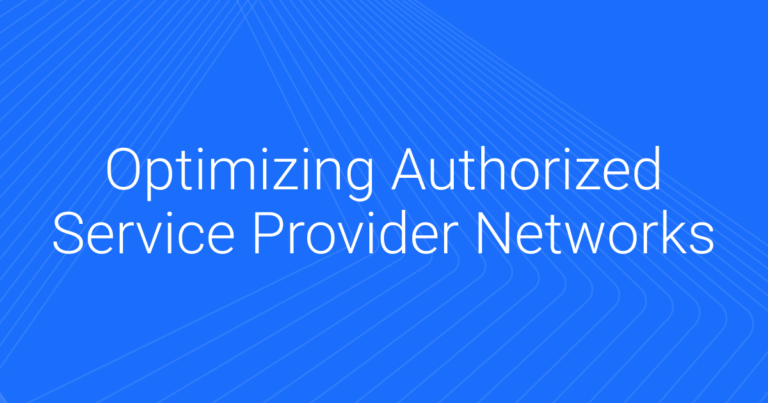The Connected Client: Visibility Like Never Before

In today’s competitive service management landscape, the quest for superior customer experiences and operational excellence is more crucial than ever. Companies looking to expand nationally or regionally find themselves at a crossroads: innovate or be left behind. This post delves into the transformative “Connected Client” approach, where integrating cutting-edge technology streamlines communication, enhances reporting, and simplifies payments, paving the way for seamless client interactions.
The Need for Change
Gone are the days when traditional service management could meet the high demands of the modern marketplace. Today’s companies are burdened with the need to deliver transparency, maintain consistent quality, and ensure compliance across broad geographic expanses. The old ways are not just inefficient; they’re costly, involving inadequate logistics support, a shortage of skilled management, underinvestment in IT, and staffing levels that are unsustainable. These challenges culminate in a client experience that’s far from ideal.
Client Management Challenges
Navigating the complexities of client management with outdated, manual processes is like trying to steer a ship with no compass. Challenges include:
- Limited Visibility: Companies are often flying blind, lacking the real-time data needed to effectively monitor service quality. This gap can allow small issues to escalate into major headaches before they’re even detected.
- Inefficient Service Requests Handling: The mishmash of calls, texts, and emails from clients leads to a chaotic, error-prone process that cries out for standardization and efficiency.
- Cumbersome Proposal and Invoicing Processes: The manual grind of handling proposals and invoices not only slows down operations but also seeds potential disputes that erode client trust and satisfaction.
Advantages of a Connected Client Approach
Embracing a technology-driven approach breathes new life into service management:
- Enhanced Visibility and Communication: Client portals and apps not only cut down on needless calls but also cloak the entire process in transparency, building trust with every update.
- Streamlined Processes: By automating routine tasks, companies can focus on what truly matters—delivering exceptional service. This not only speeds up operations but also slashes the chances of human error.
- Improved Financial Operations: The switch to digital payments isn’t just faster; it’s smarter. Speeding up transactions reduces costs and boosts service quality, as swift payments keep the business engine running smoothly.
- Deeper Insights: Robust analytics from service automation platforms arm clients with the data they need to make savvy decisions, elevating their control over service outcomes.
Technology’s Role in Enhancing Service Management
The strategic use of technology doesn’t just solve operational headaches—it offers a competitive edge:
- Increased Productivity: Mobile field solutions empower subcontractors with the right tools at the right time, skyrocketing efficiency and slashing operational costs by up to 70%.
- Better Damage Control and Compliance: Automated systems deliver real-time service validation and compliance, reducing risk and reinforcing the integrity of every operation.
- Faster Resolution and Payment Processes: Automated invoicing and seamless integrations streamline operations from start to finish, ensuring precision and expediency in every financial transaction.
Conclusion
Adopting the “Connected Client” model is far from just a tactical move—it’s a strategic imperative. By embracing digital tools, service management companies not only enhance their service delivery but also forge deeper, more resilient client relationships. This approach doesn’t just keep pace with current demands; it anticipates and shapes future trends, securing a place at the forefront of the industry.
This digital transformation is more than a pathway to efficiency—it’s a journey towards creating lasting value and success in the ever-evolving world of service management.
You may also be interested in
How the AccuSalt Integration with UtilizeCore Simplifies Work Order Management for Snow Companies
- Automation
- Operations
Winter operations can be complex, especially when managing snow removal and salting services across multiple client locations. Tracking material usage, maintaining accurate records, and creating work orders efficiently often pose challenges. That’s where the AccuSalt and UtilizeCore integration comes in, offering a seamless solution to simplify these tasks and enhance operational efficiency. The Purpose Behind…
How Technology Transforms Authorized Service Provider Networks for OEMs
- Assets
- Operations
Managing a nationwide network of Authorized Service Providers (ASPs) is no small feat for Original Equipment Manufacturers (OEMs). These networks are the backbone of warranty and repair service delivery, but coordinating operations across diverse geographies, maintaining consistent service standards, and responding quickly to customer needs can feel like juggling too many priorities at once. Each…
The Next Generation of Work Order Management
- Operations
As a national or regional facility service business owner, you’ve likely faced challenges that bog down your operations—managing subcontractors through spreadsheets, tracking service requests across disconnected systems, and struggling with high call volumes from clients requesting status updates. These issues can eat up your team’s time and hurt your ability to deliver the quality service…
How the AccuSalt Integration with UtilizeCore Simplifies Work Order Management for Snow Companies
- Automation
- Operations
Winter operations can be complex, especially when managing snow removal and salting services across multiple client locations. Tracking material usage, maintaining accurate records, and creating work orders efficiently often pose challenges. That’s where the AccuSalt and UtilizeCore integration comes in, offering a seamless solution to simplify these tasks and enhance operational efficiency. The Purpose Behind…
How Technology Transforms Authorized Service Provider Networks for OEMs
- Assets
- Operations
Managing a nationwide network of Authorized Service Providers (ASPs) is no small feat for Original Equipment Manufacturers (OEMs). These networks are the backbone of warranty and repair service delivery, but coordinating operations across diverse geographies, maintaining consistent service standards, and responding quickly to customer needs can feel like juggling too many priorities at once. Each…
The Next Generation of Work Order Management
- Operations
As a national or regional facility service business owner, you’ve likely faced challenges that bog down your operations—managing subcontractors through spreadsheets, tracking service requests across disconnected systems, and struggling with high call volumes from clients requesting status updates. These issues can eat up your team’s time and hurt your ability to deliver the quality service…
In This Article
Affiliates






Affiliates








